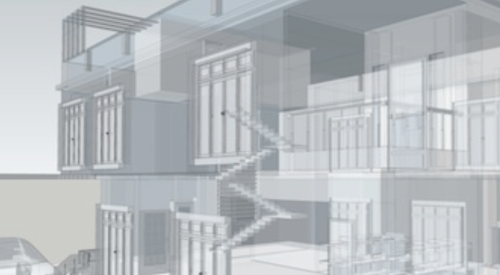Now is a very important time in home building. Volume is starting to pick up. Pricing is starting to move up. And builders now have to figure out how to rebuild their businesses. But here is the question: What will builders do? What can they do? What should they not do?
For one, builders should not attempt to rebuild their business to look like it did before. Everything is different. The market is different. The customer is different. The costs are different — they are higher and will get higher as scarcity of capacity and resources hits. Thus, the home builder must be different too. Why? Here are three reasons:
• It will be hard to hire people back to the industry. Many who left have moved to other industries and will not be coming back.
• It will be hard to afford people like before. Margins will not be the same any time soon. Therefore, builders cannot have as many people on staff, even at the same volumes.
• Without the same number of people as before, it will be hard to operate as before.
What can builders do?
Builders will have to figure out how to do more with less — fewer people, lower margins, and less time. Builders will have to adopt modern, integrated systems that can enable them to accomplish more with less. Yet builders have historically not used systems well, and mostly for good reasons: Most systems are bad.
But good systems do exist — systems that are integrated, cloud-based, and extremely affordable. Rules to keep in mind include:
• Get rid of the computers, data centers, servers, and the like. Use cloud-based systems. Trade high cost, high maintenance, and low performance for a high-value, low-cost, and pay-for-what-you-use approach. Get more for less.
• Use fully integrated systems. No gaps. No entering data more than once.
• Don’t over-complicate the systems. Only put in the data you can use. Don’t let systems cripple your business and how you want to operate. They should do the opposite.
Integrated Systems
Integrated systems available from anywhere at any time allow a builder and its subcontractors to see the same information at the same time. All “puzzle pieces” — from leads to sales to bidding/costing, vendor management, construction management, and warranty — all are connected and the “loop” is closed. There is only one version of the truth. No time is wasted inputting information from one system to the next. No time is wasted searching for information one group has and not the other. Tremendous efficiency becomes possible. Errors are minimized.
What can good systems do?
Systems allow builders to reach out to more prospects, increasing their odds of finding scarce home buyers. Systems allow builders to convert a prospect into a buyer and make sure that buyers optimize their option selections and are happy with their home, both during the sales process and after they are living in it. Systems allow builders to bid projects in greater detail and to more subcontractors, which lowers costs. Systems allow builders to manage projects more precisely so that they stay ahead of schedule and under budget. Finally, good systems allow builders to adopt best business practices in all areas of the operation, which will improve business results.
What about operations?
Here are eight ideas for improving purchasing and construction operations:
• Buy commodities, such as lumber, on a cost basis vs. a bid basis. How much over cost are you paying? If you don’t know, you could be paying too much.
• Use category management. Bid trade costs by category once a quarter for all jobs based on annual usage vs. next house or community.
• Bid at least four and as many as 10 subcontractors to find lower costs. By the way, this is difficult to do without automation.
• Participate in 20 to 30 manufacturers’ rebate and incentive programs. This has the potential to generate $500 to more than $2,000 in savings per house.
• Don’t over-engineer. Use experts from your suppliers to value engineer all products.
• Don’t over build. Examine buyer interests and wants, and don’t be the most expensive house in the area.
• Build it right the first time. Manage all communications and commitments between the buyer, the builder, and the subcontractors. Make sure it’s easy to keep everyone on the same page with the same information.
• Build it fast. Use systems to manage the schedule and communicate who needs to be where and when.
Many of the ideas presented in this article are not new; they just have never been used by many builders. The only way to obtain a different result is to do things differently. Good systems enable builders to get to the things they never have had the time to get to before. Good systems are no longer difficult, cumbersome, non-integrated, and expensive.
It will be tempting to fall into the same approaches to business as before. Systems didn’t work in the past, so don’t consider them in the future, right? When workload increased we just added more people. However, we must avoid the temptation to hire more people. It is what is comfortable, but it is not what will improve your business. You won’t be able to hire your way to profitability. Not this time. Automate.
For more information on these and other ideas for improving your business, visit www.BuilderSourcing.com or contact me at cschneider@buildersourcing.com.
Charles Schneider is the founder and CEO of Builder Sourcing Corporation, a professional services firm that works with home builders to improve their results in purchasing and the use of advanced builder management systems.













